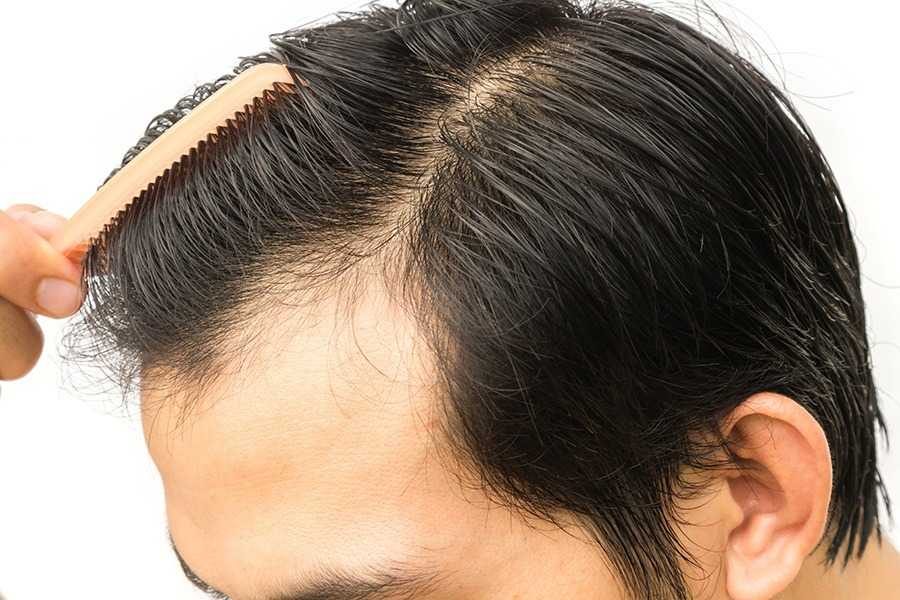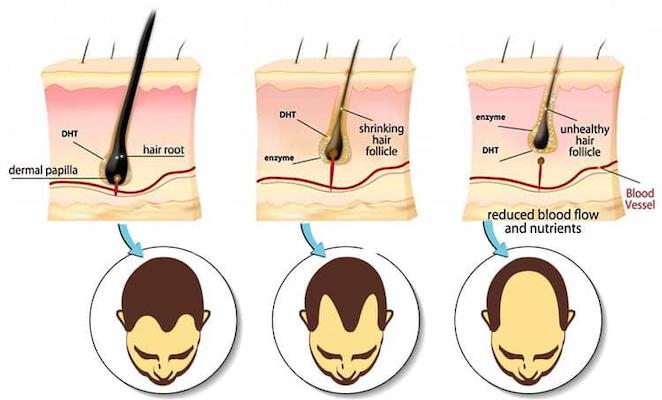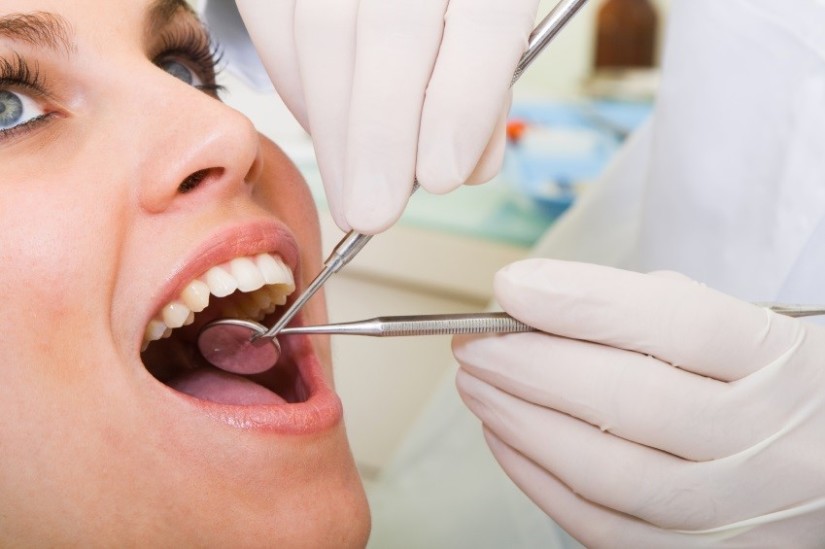According to American Hair Loss Association, by the age of 35, more than 60% of American men experience hair loss.
Since their life is seriously affected by male pattern baldness, they start to look for a treatment that is affordable and has permanent results.
The hair transplantation surgeries come into play here to be the best option. However, candidates are afraid to have transplanted hair shed after a while with reason.
Hair Loss Mechanism
Male pattern baldness is caused by DHT (Dihydrotestosterone) that is an androgen sex hormone.
DHT is the main responsible of male pattern baldness (AGA, Androgenetic Alopecia) in genetically sensitive people
What is DHT?
It is a byproduct of testosterone. It means that when testosterone reacts with an enzyme in the skin, DHT is produced.
If your hairs are DHT sensitive (if they have a lot of AR receptors), they start to lose their strength and thickness; they become vulnerable to shedding.
Do more testosterone cause more hair loss?
No, it doesn’t. There is no dose-response relationship between them.
A person with low testosterone may experience significant hair loss by having a high concentration of DHT and androgen sensors in hair follicles.
Hair Transplantation Permanency
What is the most important thing to know while deciding to get hair transplantation?
Hair follicles in the side and back of the are DHT resistant since they have low androgen receptors and they keep that property in the transplanted area.
However, that is not enough for long-term success. Other important factors are:
- Patient Eligibility
- Physician
- Peri-operative Care
Patient Eligibility
Quality of The Donor Area: The donor area should be healthy and has enough grafts to cover balding sports.
Quality of The Donor Area: A patient shouldn’t have scarring alopecia. Otherwise, new hairs also fall.
The health of The Scalp: A scalp shouldn’t be too thin or weak. If so, by using alternative treatments like mesotherapy, PRP, it should be strengthened
Physician
An experienced dermatologist hair transplant surgeon should be supervising the surgery. Nurses and technicians significantly reduce the success rate of the operation.
In addition, just enough amount of grafts should be extracted. If try to transplant too much once, an inflammation may cause graft rejection
Also, grafts should be extracted very carefully and kept in a proper solution. Otherwise, they may die in the new area.
Peri-operative Care
Before the surgery, the clinic should send you instructions to make the scalp stronger and ready for the surgery.
The clinic should be observing the recovery period. They need to make monthly meetings with you to see the healing process.
Also, you should be provided with a post-op care box with shampoos and drugs.
Don’t forget that, you are responsible for following the instructions and taking good care of newly transplanted hair. The clinic is not responsible if you are careless in the healing process.
Summary
To sum up, in order to get the transplanted hair permanent,
- Make sure to find a good dermatologist surgeon to find out your eligibility.
- Find experienced clinic/physician
- Get great peri-operative care.
Good Luck!





















No Comments